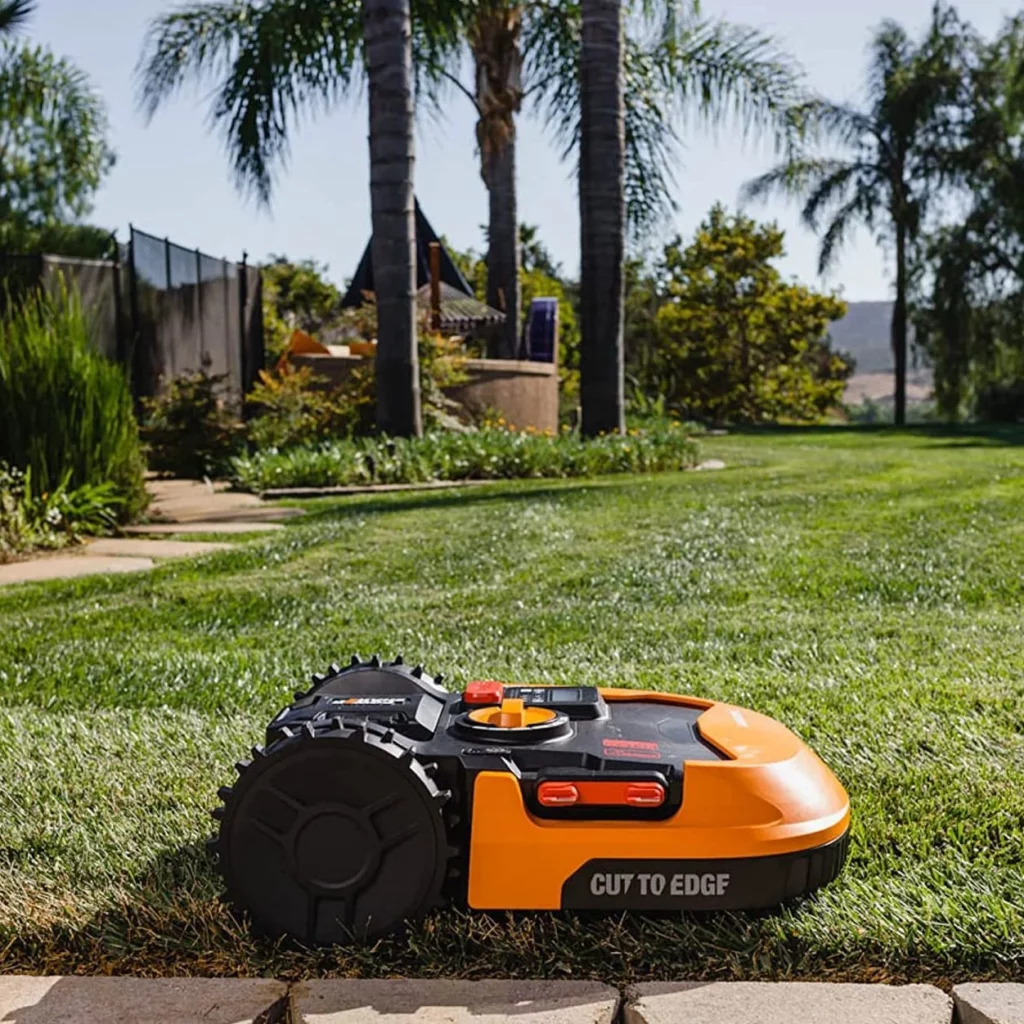Lawn care is tedious. That’s why more and more people are turning to robotic mowers. The fully automatic lawn care ensures a dense lawn and gives garden owners more time. We show how the robotic mower works.
The journeys of robotic mowers seem chaotic. Nevertheless, there is a lot of smart technology in these little machines!
Contents
What’s inside a robotic mower?
- Sensors: Magnetic ground sensors on the front detect the boundary wire or guide wire. In addition, the devices have inclination sensors. The devices switch off when the slope exceeds approximately 35 percent. A ground contact sensor stops the blades if the unit is lifted during operation. A rain sensor on the housing pauses mowing until the lawn is dry. A temperature sensor pauses charging if it gets too hot.
- Height adjustment: The lever is used to pre-select the cutting height between 30 and 60 millimeters.
- Blade disc: Unlike the gasoline lawn mower, which cuts the grass with power and thus shortens even tall blades, the battery-powered robots always cut the grass by only a few millimeters. The grass clippings settle on the ground between the blades. It becomes a natural fertilizer, also known as mulch.
- Control unit: The electronics regulate the travel path and battery management. It also monitors all sensors and controls the mowing times according to time and date. Some models can also be controlled from a smartphone using a manufacturer’s app via WLAN.
- Drive: Both drive wheels can be controlled individually. This makes the mower extremely maneuverable. On one battery charge, the units can manage 30 to 90 minutes of use. Depending on the power of the model, they can manage areas of 400 to 1,200 square meters: at around 3 to 4 km/h.
Robotic mowers – Which mowing blades are available?
Depending on the task and the thickness of the cut material, different blade shapes are available. Robomowers usually use individually bolt-on, razor-sharp blades (left). The more robust star and double-blade blades require higher numbers of revolutions than the small blades.
How does a robotic mower mow?
Most models work with a random route that seems chaotic. If the mower hits an obstacle or the perimeter wire, it turns around a randomly determined angle and continues mowing. This is as haphazard as it seems, but in continuous mode it provides an amazingly even cut. The engineers have copied the principle from sheep.
For uniform areas, some models mow in linear paths. This approach is less time consuming.
How does the boundary wire work?
The boundary wire is driven in with pegs 30 centimeters from the edge of the lawn (red). By changing the magnetic field on the wire, the sensors detect the boundary of the mowing area. Some models also require a return wire (blue). It guides them to the charging station.
Robotic mowers are guided by boundary wires (red) and return wires (blue).
How do I charge a robotic lawnmower?
A transformer converts the 230-volt connection voltage of the charging station into low voltage (between 24 and 36 volts). The devices require 90 minutes of charging time until the next mowing round. Docking and undocking in the charging station is fully automatic. Some manufacturers even offer charging stations that can be lowered into the ground.
A robotic mower automatically drives to its charging station when needed.
Is a robotic lawnmower worth it?
Weather permitting, robotic lawnmowers work every day. The principle of success of these machines – which are weak in comparison to a gasoline mower – lies in their continuous operation. If you take into account the time required for manual equipment, the robots, which cost around 1,500 euros, are worthwhile for more and more garden owners.
Weak point: On significantly uneven lawns, robotic mowers often get stuck. Objects such as fallen fruit or toys are also critical.
A robotic mower is worthwhile if you …
… have little time for lawn care
… there are no or only a few fruit trees in your garden
… have a flat plot of land


